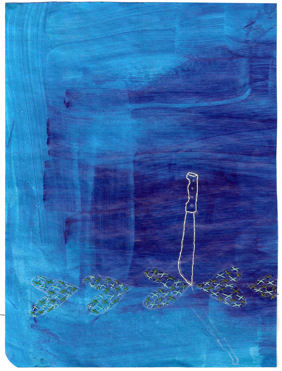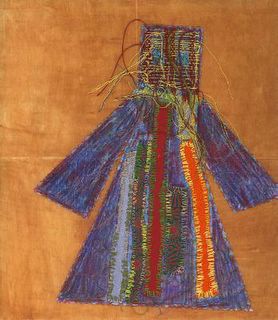What does the line of a drawing invoke?
What is the significance of the collective process? Talk about collective deep knowledge.
Is that collective working process important for your work to grow, expand?
What is the significance of scale in your work? What is monumental, epic? What is the poem? How do you combine the poem and the epic?
What role does the camera play and why? Dancer, participant, witness?
Why is the video necessary at all? Is it documentation? Or, as Pato Hebert asks, is it as important as the performance/ritual/gesture? (Pato Hebert)
What is the significance of place? Is it specific, diasporic, liminal?
What is the significance of time in your work? (filmic, Hopi concepts of time as cyclical, ancestral, etc)
What is the significance of the body, what does it represent, stand in for, site, nation, collective?
Why this body? As Samiya Bashir says, whose body is this?
What is the role of sound in the performance/video work? Silence? How does that affect aesthetics, form?
What is the movement between silence and the infiniphonic? How is silence infiniphonic? What is your relationship to extended versions? (Fela)
What happens at the crossroads? 'This river was once a road' (Ben Okri…this road was once a river)
How do you picture parallel dancers?
What would it look like to dance in an earth skirt?
What are your tools and offerings?
Who are your gods? (asks Sharon Bridgforth)
What is the significance of the story?
What does the story change? And how?
What is the line back to the body?
What does the camera witness?
What does it mean to wrap your head with fathoms? When would this be necessary?
The wrapping of feet, the walking in the dry riverbed.
How do the dancers unwind from the camera? Return to the camera.
How is the camera the 8th dancer, multiple dancers?
How do the dancers make sacred space in which to dance?
What do the spirits see if they are watching us dance? Where do they watch from? The trees, the altar, the river bed?
If the dance were sound, how would you mix it?
How would you play the off-key?
What is the weight of lovers (in fathoms)? (Felix Gonzalez-Torres)
Describe the color of your deepest power?
What is your flesh offering? (Sundance)
How is the prayer sent?
What is the place of sacrifice in the work coming to life?
Do you believe in sacrifice?
What are your primary gestures and rituals?
What are the gestures (of the body) that demonstrate the expression of your power? What does it look like to make them over an extended period of time? What does it look like when a group makes them over an extended period of time? What is invoked, remembered, released, forgotten, conjured, healed, explained, started, stopped, created?
What is it to wrap your head in fathoms?
Whose eyes?
What is the slow motion dance?
How do you take the sweet road? (Sharon Bridgforth)
What do you want to say about the crossroads?
Describe the lines from there to here.
What do you want to talk about?
What do you know?
Describe how time functions, what is your concept of time in the work?
What is the presence of sound, how is the visual full of sound?
What does the work want?
What wants to happen?
What are you scared of?
What do you need to surrender?
What are the resources that this work already has, what has it shown you?
What rituals do you need to do for yourself in order for the work to happen?
What do you observe when you observe your artmaking process? (Record the journey)






























_2007.jpg)









